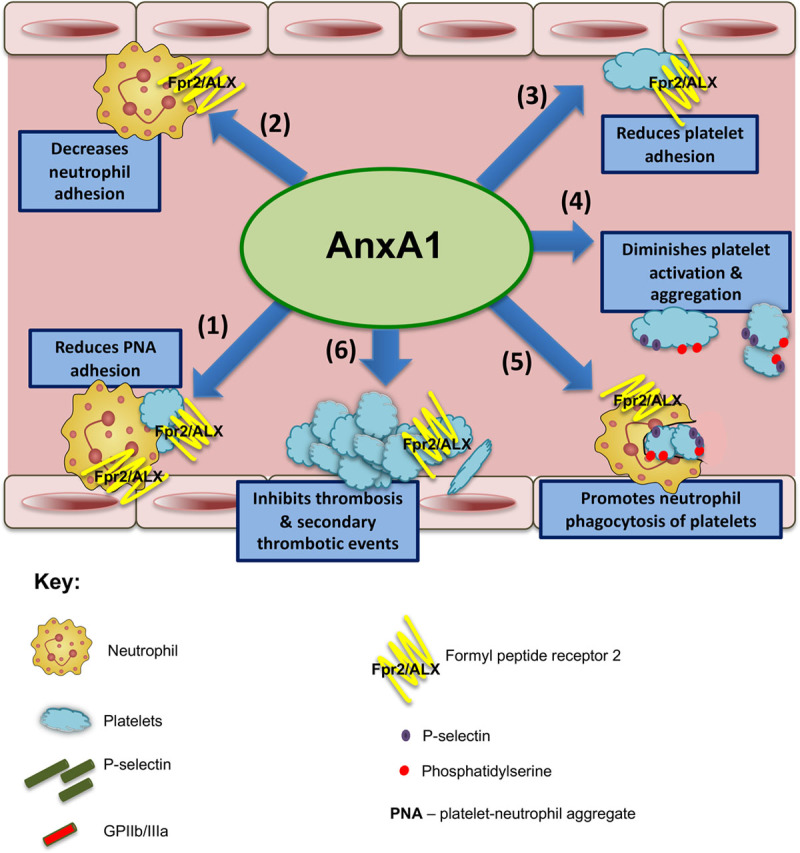Figure 7.

Annexin A1 (AnxA1) mitigates thromboinflammatory responses and promotes resolution during ischemia reperfusion injury.Schematic overview shows the effects of AnxA1 on both thrombotic and inflammatory events as follows. Step 1 reduces platelet–neutrophil aggregate (PNA) adhesion on endothelial cells in the cerebral microvasculature; steps 2 and 3 decrease neutrophil (step 2) and platelet adhesion (step 3); step 4 diminishes platelet activation and aggregate velocity, promoting a phosphatidylserine and P-selectin–dependent clearance program; step 5 promotes neutrophil phagocytosis of platelets for resolution; and step 6 protects against enhanced intravascular thrombus formation and secondary thrombotic events in the cerebral microvasculature. ALX indicates the lipoxin A4 receptor; and Fpr2, formyl peptide receptor 2.
